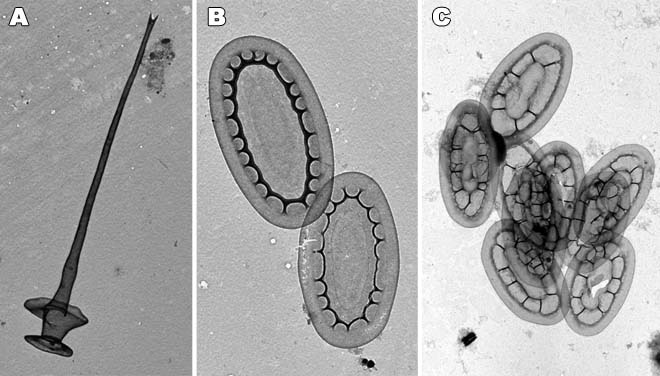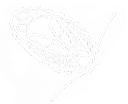Cells are solitary or grouped in more or less spherical colonies (C. longispina and C. brevispina), free-living, autotrophic, covered with siliceous scales and spines. Two flagella of unequal length are inserted apically.
Identification of Chrysosphaerella species is based on the ultrastructure of scales and spines. Scales are elliptical, oval or circular and variously patterned with ridges and hollows. Spines are hollow, with a bifurcate or trifurcate tip. Spine base is complex, in some species bobbin- or pulley-shaped, consisting of two discs joined by a hollow tube. Some solitary species have a simpler base, which is separated from the shaft by just a septum; and the spine shaft is pierced by a circular or elliptical hole just above the septum.
The taxonomy of Chrysosphaerella is complicated by its morphological similarity to the genus Spiniferomonas. Nicholls (1984) described two solitary Spiniferomonas taxa (S. septispina and S. enigmata), whose scales resemble those of the genus Chrysosphaerella. He further reclassified two additional Chrysosphaerella species (C. coronacircumspina and C. salina) into the genus Spiniferomonas, because of their unicellular habit. However, Kristiansen & Tong (1989) did not recognize the differences between solitary and colonial species to be genus-specific, and rather differentiated the genera according to the spine structure. Those species having spines with two basal discs they classified into the genus Chrysosphaerella, whereas Spiniferomonas species were characterized to have simple spine base. Finally, marine and brackish species were transferred to the Cercozoan genus Thaumatomastix (Beech & Moestrup, 1986).
 |
| Chrysosphaerella siliceous structures. A. Tubular spine with two basal discs (C. brevispina). B. Oval scales with an undulating rim (C. brevispina). C. Long elliptical scales with a rough reticulation and a longitudinal depression in the center (C. longispina). |
